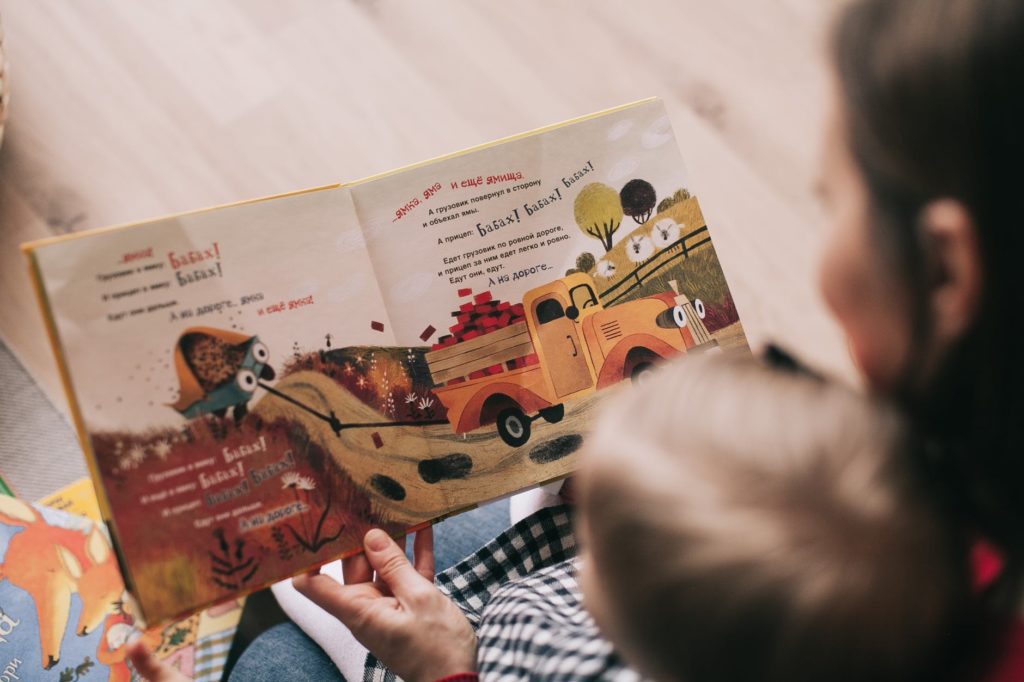How to Successfully Help your Children Learn a New Language.
Maybe you have decided that you want your child to learn a second language or maybe you are just exploring some new learning opportunities for your child. Here are four do’s and don’ts to help your children learn a new language.
Where do you start? Do you know the language yourself? If so, are your children willing to learn from you? If you don’t know the language, can you still teach them? My thoughts are yes and yes! Yes, they are willing to learn from you even if you have your doubts, and yes, you can teach them even if you don’t know the language yourself. Learn together!
#1 Do Practice
Practice helps children learn a new language
I have always been taught that practice makes perfect. Now, people often say practice makes progress. Either way, this is true! You cannot perfect something, or make progress, without practicing.
Think about the best basketball player, the best dancer, the best chess player, the best chef, etc. Do you think they happened to be the best by chance? Well, there is a good chance that they have a natural talent for the thing they are good at, but without practice, they would not be the best. There is always someone bigger, stronger, more knowledgeable, and better than us in some way.
Work Hard
Athletes work hard to get where they are at. It’s not by chance. You must practice in order to be the best at something.

This is the same as learning a language. If you want to learn a new language, You MUST practice just like you would anything else. If you are serious about learning a new language, then set time aside each day. I recommend about 15-30 minutes per day.
Focus on Vocabulary Building
During this time, you should focus a large portion of your time on practicing old vocabulary words and the other portion of time learning new vocabulary.
I know, I know, your schedule is packed full and you don’t have an extra 15-30 minutes to practice.
Ideas to Help you “Practice” without Changing Your Current Schedule
Practice while you are on the go
I usually listen to music, and I know many people who listen to books on tape while they drive. This is a great strategy to double up on things that need to get done. If you need to get somewhere, why not help your children learn a language on the go.
Simply hold up a flashcard, at the stoplight of course, and ask your child to guess the vocabulary word. If you have more than one child, even better, ask them to help each other so you can focus on the road.
While in the car also consider, listening to children’s songs in the language you are trying to learn. If you are wanting to learn Spanish here are some great Spanish songs. Have your child watch a YouTube video, play I Spy, etc. I Spy is my favorite road game. As you are driving look for different things. One person can say, I spy something green. The second person looks for something green and says, I spy a tree. If you get it right you switch turns. If you get it wrong you give another clue. You would play this game in the new language, which gives you plenty of opportunities to practice vocabulary words and using descriptive words.
Practice while you are cooking
I usually get bored when I am cooking. I tend to leave the kitchen to do other things and wind up burning my dinner.
Instead of doing what I do, Have your child sit with you and practice the new language.
If you are not sure what to practice, consider talking about the food you are preparing. You can practice new words and even practice math measurements in the new language.
If you don’t know a word, look it up. I don’t know about you, but I always have my phone by my side in the kitchen in case I need to look up a recipe or a cooking technique. You can do this with language learning too. I typically have Google Translate at my fingertips. Now you can download the app which makes things much easier!

Practice while you are giving your kids a bath
I hate to admit it, but I am one of those parents that usually rushes bath time. My kiddos love to play in the bath. Instead of rushing bath time as I do, take a few more minutes and practice.
You can use bath crayons to practice colors or write new words. Consider purchasing bath books in the new language or practicing the names of the bath toys. You can also talk about the many different objects in the bathroom.

Practice by hanging flashcards all over your home
By hanging the words all over your home, on the objects, you can simply practice as you go about your day. The words are right in front of you. You can continue your daily activities and practice the words as you go. This can include things like the wall, floor, chair, sofa, table, fireplace, television, etc. If it is in your home, label it! This is a great way to become familiar with all of the objects in your home and practice them multiple times.
Practice as part of your bedtime routine
Do you read to your child every night? Try reading a book in the new language. Depending on how advanced you, you can also show a nice picture and practice telling a story about it in the new language. If you are not that advanced yet, stick to ABC’s and 123’s. Even better, design your own books in the new language and read them at bedtime. Also, consider getting audiobooks. I recommend, whenever possible, to have the book in hand while listening to the audio. Follow along as you listen and read.

#1 Don’t Stop and Don’t Forget to Practice
Set Goals.
It is easy to get caught up in the busyness of our daily lives. When we set new goals, we are usually excited and go overboard in the beginning. We do too much too fast. We can’t keep up with the goals that we set for ourselves and easily give up or slowly fall back into our old routines. I know I have done this plenty of times.
To make things easy on yourself, start off slow and built up to 30 minutes if it is too much in the beginning. Practice for at least 30 days. It’s been said that when you do something for a full 30 days it becomes a habit. We want our children to learn good habits when they study a new language, but it will become much more than that, I will explain later.

Here are some ideas to help you, if you think you will forget or give up easily.
Set a timer
If you think you will forget, set a timer on your phone. Set the timer to go off during all the times you want to practice. What time do you usually drive in the car? Cook? Give your child a bath? If those are the times you want to practice, then set the timer to go off at that time each day.
In addition to setting the timer, don’t forget to label it. All too often, I set a timer and then don’t remember why I set it until it is too late. If you label it you will not forget. Think about also setting a repeat timer. If you are anything like me, I may hit the stop button or snooze when I am running late, and it would be helpful if the timer would go off again in a few minutes.
Create a GO-bag
Create a Go-bag with learning tools. This Go-bag can be a small backpack that you leave in the car or one that you can bring with you anywhere you go. Fill your Go-bag with flashcards, books, workbooks, pencils, and colored pencils.
Try not to use crayons, I have learned my lesson with that. Melted crayons in the car, are not fun! Usually, it is one that has fallen between the cracks of the car seat and when I take it out to vacuum, I find it melted and my seat ruined. Ugh!
Write down your reason for wanting to learn the new language.
Why are you trying to get your child to learn a new language? Is it for school? Are you trying to connect with family members and neighbors? Are you planning on traveling soon? Do you simply want to connect and learn about different cultures? Or do you plan on doing everything you can to make sure your child has a chance at a better future?
Whatever your reason, make sure to write it down and review it often. I would go as far as hanging up the goals on my mirror or near my door. This will serve as a reminder, each and every day, of why you set those goals in the first place. Setting goals and reviewing them often will also make it less likely that you will forget about or give up on that goal.
Plan what you want to learn and write down your goals.
Once you know why you want to learn a language, make goals for learning the language. Sit down with your child and write down your goals. Determine what they want to learn, how you know they have learned it, and then what the reward will be.
Reward yourself and your child for meeting those goals. This doesn’t have to cost money, although it can. Let’s say you set a goal for two weeks to learn the alphabet. You will first determine what actions you will take to meet those goals. You will then determine how you will know when you have met your goal. Lastly, you will set the reward. It could be something as simple as some time to watch a movie or eat your favorite ice cream, or it could be some special time spent with mom or dad.
Once you have met a goal, celebrate it! Post about it. Allow your friends on social media the chance to congratulate you on meeting your goal. This could encourage your child, and you, to keep going.
Take a day off. It is okay to take a mental break every now and again. In fact it is vital for our brain function.
Do something special together. Go out to eat, go for a walk, go to the park, watch a movie, play a game. You can set your reward ahead of time and know what you will get before you meet the goal. This can be motivating.

Ask your child what they want.
If you can get them intrinsically motivated, the chances of them succeeding are even higher. What is intrinsic motivation you say? It is when we want to do something because we enjoy it and not because we expect a reward. Example: A child who is intrinsically motivated will clean their room because they like the way it feels to have a clean and tidy room. A child who is extrinsically motivated will only clean their room because they know they will get chore money if they clean it.
There are a few ways to help your children become intrinsically motivated to learn a new language. Make sure the activity is fun and not stressful. Make sure they know why it is important. Believe it or not, they may be motivated to complete the activity if they know why it adds value to their life. Have your child set their own goals. This works well because they have more say in the goal and therefore they take ownership of it. It is not just something they are being told to do.
Think about it like this… If you came up with a great idea for work, you are typically very motivated to put in as much work as possible to make a great idea a success. If someone else gave you a task and you had little interest in it, you will complete it because its part of your job, but you will not be as motivated unless there are reasons to be motivated, as a pay increase, or you are trying to secure a higher position in the company.
#2 Do Make Learning Fun!
Learning something new can often be stressful for people. I have never truly experienced this with my own children until recently.
One of my four-year-old twins started pre-K and has homework packets. I began noticing how easily he gives up on difficult tasks like writing and cutting paper, and he gets angry when he is learning something new.
He also has a negative viewpoint of himself. When I say something positive like, “You can do it! Look you are doing so well!” He says, “No, I am not. I can’t do it.” and throws his pencil to the ground with a sad look on his face.
This makes me nervous because, as a teacher, I can quickly imagine him becoming one of those students who acts up in class because the task is too difficult or one of those students who never completes his homework.
If he is acting like this now, what is he going to act like when he starts kindergarten and has nightly homework to complete, or has difficult activities in class.
I have done some research and found some great articles to help if you have a child like this. Help a child who give up easily and Raise children who will not give up. My suggestion is to keep everything fun!
Here is a list of things you can do to help keep things fun.
When learning new things keep it short.
Switch the topic if it becomes overwhelming and come back to it later. As I talked about earlier, our brain often needs a break. The moment you become overwhelmed your brain begins to shut down. Take a break and come back later which will allow you to look at it with a fresh start. The same goes for children. As soon as they become overwhelmed, they don’t have much of a chance at that moment. Give them a break and see what they can do later when they are feeling less stressed.
Complete fun activities to aid in their learning.
Here is a list of four activities that will help your child learn new vocabulary words. They include pinwheels, memory games, color the picture, and a letter book. You can print the activities listed or create your own. My children enjoyed using these activities for several days.
Turn everything into a game.
You can find online learning games, or you can turn everything you do into a game. Have you ever set a timer and raced to get your room clean? It can be fun, right? Do the same thing with learning a new language. Play games with each other to practice new words. Time yourselves and see if you can get faster and faster. If you are advanced enough to be reading, you can read the sentences several times while timing yourself. This also can help with your reading fluency.

Sing songs and dance.
This is always fun, even for me. There are plenty of fun songs and videos in the new language you are trying to learn. I recommend checking out YouTube. Now with YouTube Kids you can feel safe with the content they will come across.
Laugh a little bit.
It isn’t easy to learn a new language. It is okay to laugh at yourself when you get something wrong. Not at anyone’s expense of course. If it hurts someone’s feelings, this isn’t the way to go. However, sometimes a good laugh can relax us and help us to learn even more. You can also look for some funny jokes in the new language.
#2 Don’t Yell or Make Learning Stressful.
When we yell, we make the learning process more stressful and the child will often decide it isn’t worth the trouble. Instead of yelling, take a deep breath and ask them to make the correction. If they still are not getting it, take a brain break and come back to it.
It is difficult to learn a new language. Usually, because there are many sounds in the new language that do not exist in your home language. This can be very challenging to recreate a sound you have never heard and doesn’t exist in your own vocabulary.
The younger you are, the easier it is. I recommend teaching your children their second language from the moment they are born. If you haven’t done that, don’t fear, there are plenty of children (and adults) young and old who learn a new language every day.
Here are some ideas to make learning less stressful.
Start slow and start from the beginning.
I would do this even if you feel like you know the information already. Starting off with things your child already knows can help build confidence. Start with the alphabet or some basic characters and make sure they have them down solid before moving on.
Practice the stuff you know first, then add on new things. Practice the new things slowly and daily until it becomes part of the things you know.
Take frequent breaks.
Taking short brain breaks can help your brain feel less stressed. I don’t recommend ever practicing for more than 30 minutes at a time.
Encourage your child.
Let them know they are doing great! Your encouragement means a lot to them. They will do better when they know you are on their side.
Listen to music.
Listening to classical music can calm you down and can help your brain to remember things more easily. Try this while you study.
Use graphic organizers.
Graphic organizers are very helpful tools to aid in the learning process. To help you remember what you are learning, try using a KWL Chart. Graphic organizers can be very helpful in reducing stress when learning because they help to organize the information. In the KWL Chart. The K stands for Know. In the K column, you will write the words you already know. The W stands for Want to know. In the W column, you will write the new things you want to learn. After you have learned some new things, you will fill out the L column. The L stands for Learned. This is a great way to make sure your child is retaining the information they are learning.
The KWL chart can be very helpful when you are beginning a new topic. Let’s say that you will begin a language-learning unit on animals. You will have your child fill out the K and W columns. They may list several animals they know in the new language and then write several animals they want to learn about.
This will help you to know where to focus your time. After you have studied new animals, they will fill out the L column with all of the animals they have learned. This will help you to know how much they are learning.
#3 Do Use the Language!
If you don’t use the language often you will begin to forget the vocabulary words that were once part of your daily routine. It is important to use the language you are learning often. Try to get to a point where you are thinking and dreaming in the new language. This is when you know you have mastered the language. Make sure it doesn’t just become a habit, but that it becomes part of who you are. Using the language will help you with this goal.
Here is a list of ideas on how to use the language.
If you want your children to learn a new language encourage them to talk to people who speak the language they are trying to learn.
Is there a nearby restaurant or some neighbors who speak the language? Where I live, we have a hugely diverse population. Almost anywhere I go I can find someone who speaks another language. If I want to speak Spanish, I can go almost anywhere.
There is a nearby Chinese Restaurant and the owners are originally from China so they know Mandarin. I bet if you went to their restaurant they would be willing to speak to you in Mandarin.
If you go to a restaurant, you can practice ordering your food in the new language. You can practice vocabulary words while you are there. Table, chairs, walls, floor, silverware, plates, bowls, bathroom, etc. There are plenty of things to talk about while you are there.
#3 Don’t Be Shy!
I think this is easier said than done. I don’t know about you but I feel shy and get embarrassed when I try to talk to people in a language I am trying to learn. The thing is, most people do not care if you mess up and will actually applaud you for trying.
If you feel nervous at first, just start off slowly. Ask their permission to practice. Tell them you are trying to learn a new language and would love to come to the restaurant every Sunday if they will speak to you in the language you are trying to learn. Before you know it you will become more confident when speaking the new language.
#4 Do Go for it!
As with anything in life. If it is what you truly want, then what are you waiting for? Go for it! I have spent too much time contemplating my decisions. If it is what I truly want, and I believe God has placed the desire in my heart, then what is stopping me?
If your children want to learn a new language, here is a list of ideas to go for it.
Just begin. We often spend too much time trying to figure out where to begin. In order to get started begin somewhere, anywhere, just begin. The younger you are the easier it is for children to learn a new language. But you can begin at any time.
As I talked about earlier, I would personally start by writing down the reason you want to learn the language and the goals you have for yourself.
I would pick a platform that works best for you and start there. There are plenty of free resources for you to select from. One popular free learning tool is Duolingo. Just five minutes per day can get you on your way!
Also, consider a local tutoring program or my online language development program. This will cost you money, but if you are serious about learning the language, it can be very helpful and fun! This can give your children an opportunity to speak with teachers from around the world gaining some cultural awareness and actual speaking practice. They will be corrected in an encouraging and loving way that allows them to feel more confident when speaking the language. The Little Lions Learn language development program is online so you can have class from the comfort of home or on the go, and it is truly a life-changing way to learn!
#4 Don’t Let other Things Hold You Back!
I have heard it too many times. We don’t have time to learn that now. My child is struggling in math or science. They need to stay focused. I agree. They need to focus and practice on the things they are struggling with so they can improve. But did you know that when children learn a new language it actually helps them in many other areas?
It doesn’t hurt them to bring on another focus. In fact, this could be a great brain break for the struggling topic. Earlier we talked about the need to take many brain breaks. It is important to take frequent breaks from something difficult we are trying to learn. If your children enjoy learning a language but struggle in math, I say, let them learn!
It is proven that learning a second language increases test scores, enhances critical thinking skills, and has lifelong improvements in brain functions. Why wait? Start learning a new language today!
Conclusion Do’s and Don’ts to Learn a New Language
In conclusion, there are several do’s and don’ts when helping your children learn a new language. Some of these will depend on your family and your personal needs. The most important do’s and don’ts to learning a new language include do practice, don’t stop and don’t forget to practice, do make learning fun, don’t make learning stressful, don’t give up, do use the language, don’t be shy, do go for it, and don’t let other things hold you back. There are several free and paid resources for you to select from. Make a plan and stick to it. Use all of the available resources. You can do it!
Please leave a reply, we love to hear from you! What are some learning strategies or resources that you recommend when learning a new language or something new?
